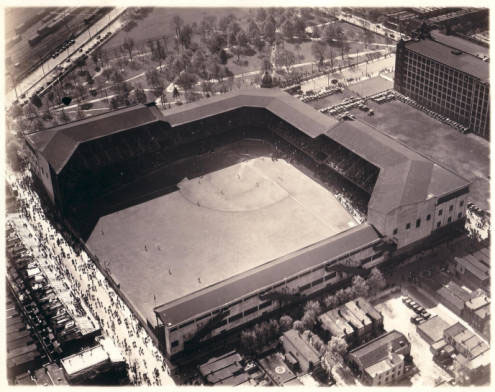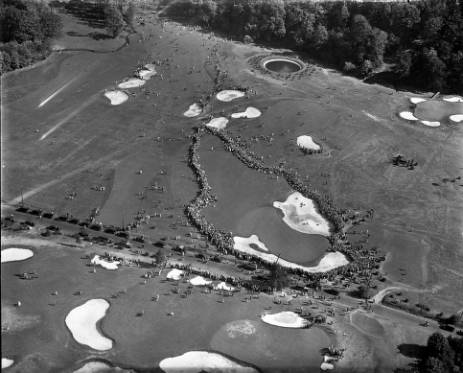Late in December, Hagley Museum and Library learned that it had been awarded $5,560 from the National Endowment for the Humanities (NEH) to rehouse the J. Victor Dallin Aerial Survey Collection photographs. The images are aerial photos taken of the Delaware Valley, mostly from the 1920s and 1930s. Dallin was a Canadian who flew for the Royal Flying Corps in World War I, where he learned the craft of aerial photography. He settled near Philadelphia thereafter, worked with Aero Service Corporation for several years, and then opened up his aerial survey business near the current location of the Philadelphia International Airport. The Dallin collection is comprised of more than 13,000 images, mostly taken between 1924 and 1941, in the form of glass plate negatives, lantern slides, and photographic prints. They capture the greater Philadelphia and Delaware Valley region during a time of rapid growth and transition. They document waterfront industrial sites like Campbell Soup, Sun Oil’s refinery, Pusey and Jones Shipbuilding, Ford Motor Company. The collection includes recreational facilities like the Upper Merion Cricket Club (now Upper Merion Golf Club) and Shibe Park, grand estates like Atwater Kent and Archmere, and burgeoning suburbs. Dallin had a gift for capturing human drama from the air: the 1929 World Series at Shibe Park, the burning of the Hindenburg at Lakehurst, and Bobby Jones’s 1930 victory at the Merion Golf Club (then the Merion Cricket Club) on his way to becoming the only golfer to secure a single-season Grand Slam.
The Dallin collection is among the most loved of Hagley’s image collections. The more than 7,000 digitized images made from the collection have received a million plus page views since they were made available online in 2008. The Dallin Collection documents urban, suburban, and business growth in the region. The rise of consumer culture, recreation, and modernity is cast in material, technological, economic, environmental, and geographical terms in these photographs, making them a tremendous source rich in research value for researchers in the humanities.
Aging and acidic containers have held many of the photographs, including the plate glass negatives. Of these negatives, more than 5,300 have no corresponding print or scan, meaning that if they were damaged, their images would be lost forever. This project has been regarded as a high priority, aimed at removing the gravest and most immediate risks. The NEH’s generosity will be applied to purchasing materials—acid-free folders, boxes, and envelopes—as well as shelving components more suitable than the treated wooden shelves on which the images currently reside. The work will be overseen by Laura Wahl, Library Conservator, and performed by Laurie Rizzo, Audiovisual Archivist. With more than two million images in Hagley’s Audiovisual Collections, the work will require some moving and staging, work that is already underway. After the images are rehoused, the older shelving will be dismantled and removed, replaced by metal shelving. Finally, the rehoused Dallin Collection will be moved to its new shelf locations. The project is expected to be completed by the end of the year.
The staff at Hagley are very grateful to the National Endowment for the Humanities for helping us preserve this unique photographic collection.

Any views, findings, conclusions, or recommendations expressed in the Dallin Collection do not necessarily represent those of the National Endowment for the Humanities.
View the Dallin Aerial Survey Company Photographs at the Hagley Digital Archives
Erik Rau is Director of Library Services at Hagley Museum and Library.


